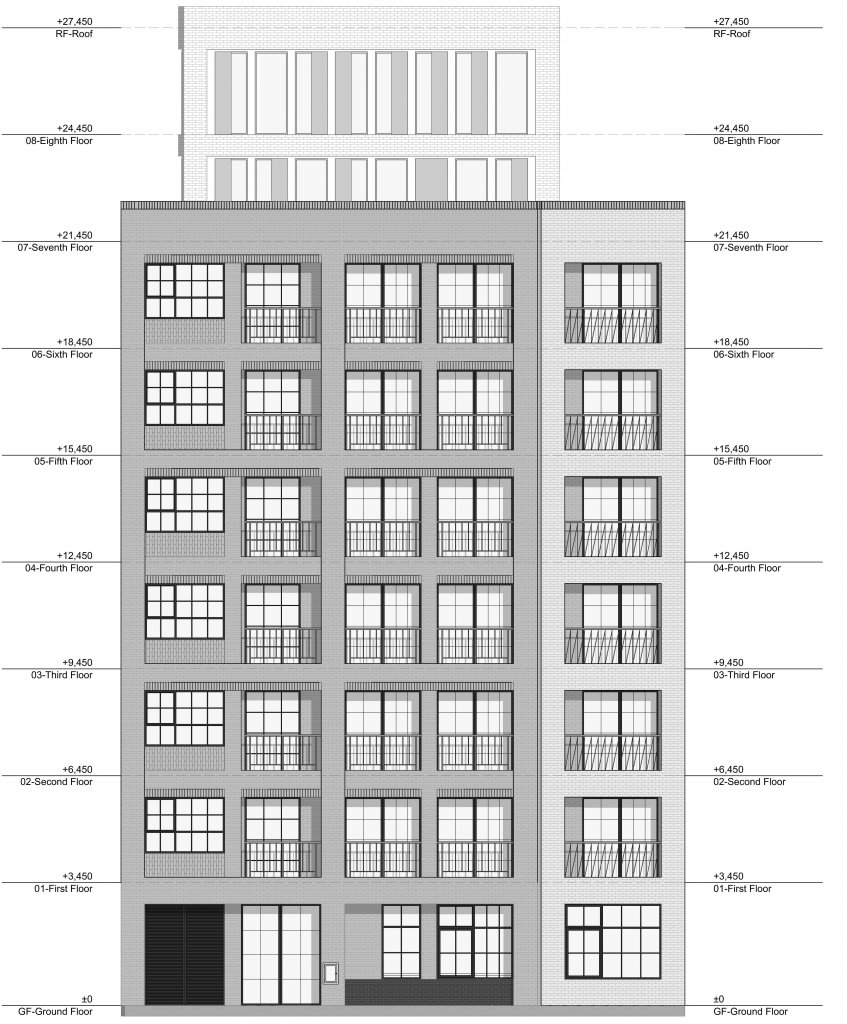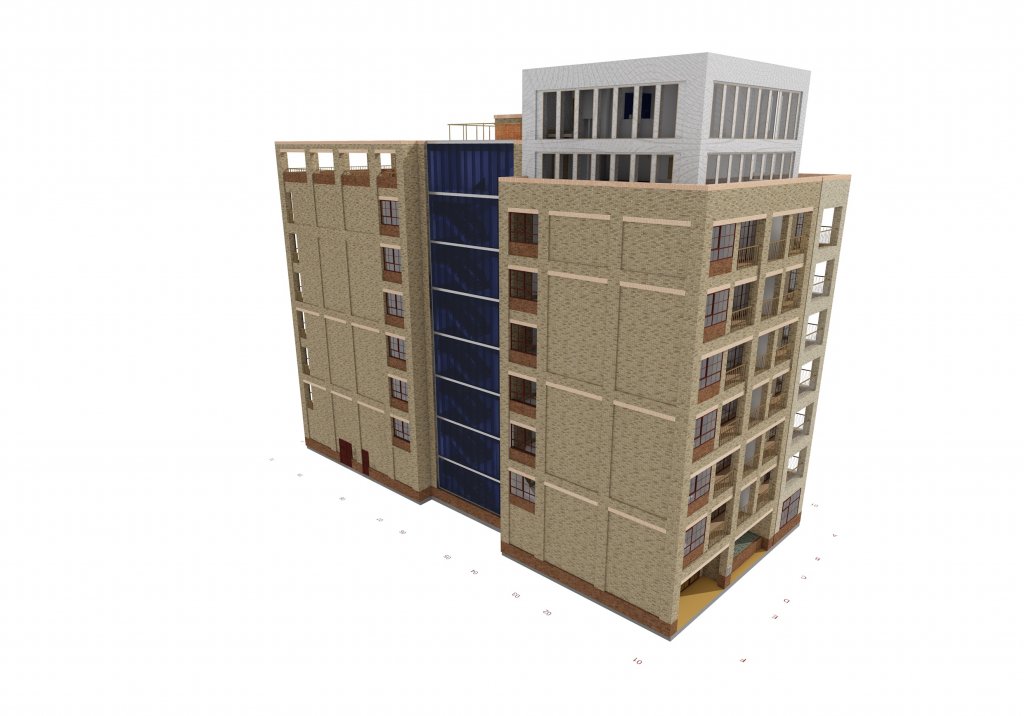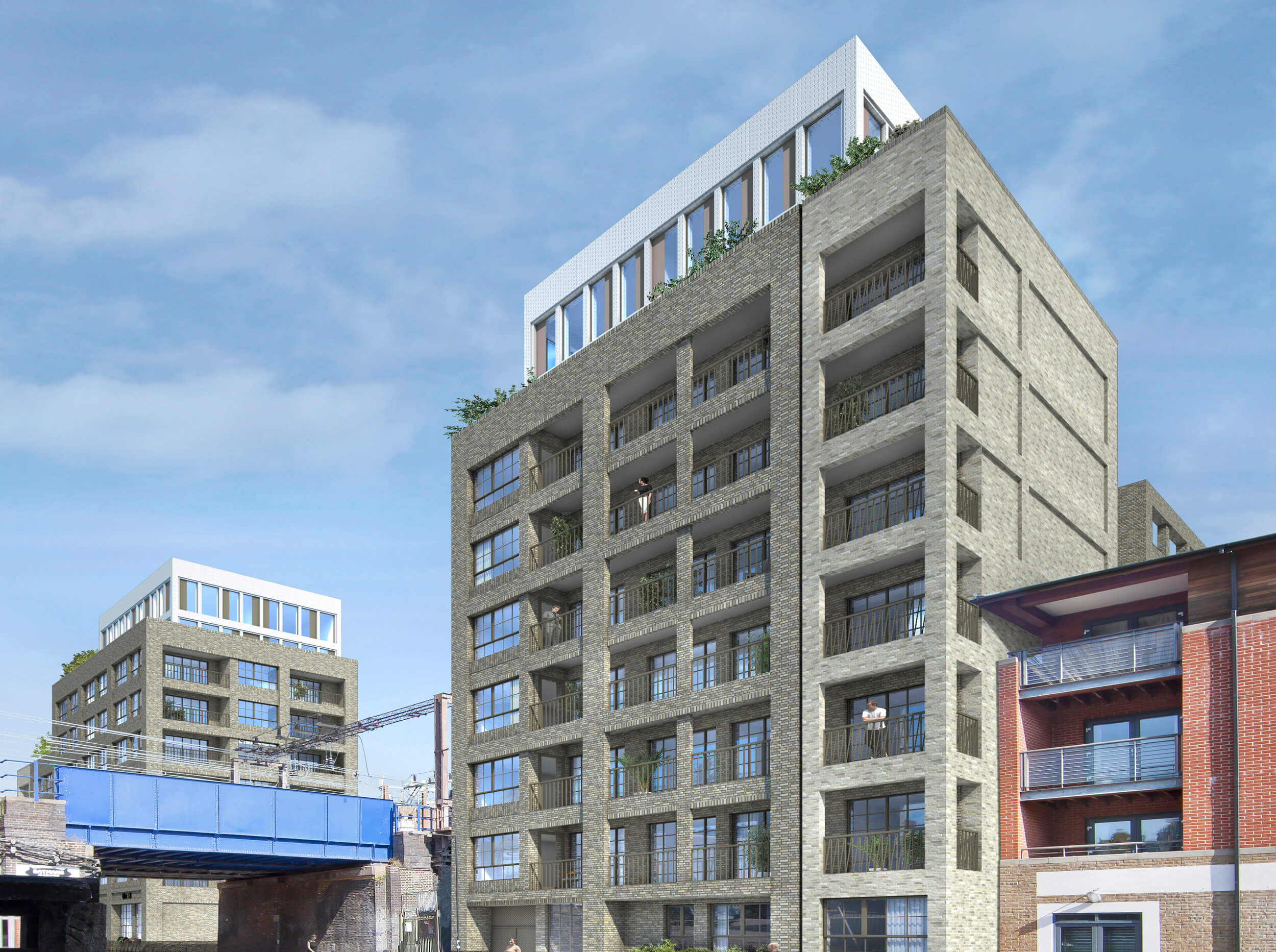Create inherited the project at the post planning stage from another architect, and its initial brief was to demolish an existing industrial unit at 33 Caroline Street and replace it with 33 new build apartments.
Soon after Create started work, the client added a second building to the project, this time with a Grade II listed façade which needed to be retained. A third building was subsequently added to the brief.
Adjacent to the railway line, the brownfield site posed a number of constraints. As part of the construction planning, the architects liaised with Network Rail to ensure there wouldn’t be any disruption to railway operations.

Designed to echo their industrial context, the buildings feature warehouse style windows and use vernacular materials, predominantly bricks. Phases two and three will provide an additional 60 units which are a mixture of studios, one, two and three-bedroom apartments.
Meeting tight deadlines
with intuitive software
We received limited information from the previous architects in the form of 2D drawings and needed to turn the project around in a relatively short timescale.
This was our inaugural Archicad project. Before we decided to switch to BIM, we were using AutoCAD and SketchUp. We looked at other BIM software, but it was very expensive.
Paul Bedson, Architectural assistant and Graphisoft certified BIM manager at Create Design

As well as being a more cost-effective option for Paul and his team, Archicad proved to be much more intuitive.
“We had four or five people working on the Caroline Street project most of the time,” said Paul. “They were up to speed very quickly and we were able to produce around 100 different iterations of the design to meet the developer’s changing brief. Fortunately, with Archicad, we could make these changes quickly and easily. Two years on, Archicad has definitely proved to be the best choice for the practice.”
Quick and easy
data exchange via IFC
Paul continued: “Previously, when we were coordinating with structural engineers, we used 2D drawings and overlays. On this project, we used IFC data exchange for the first time and the process was a two-way data exchange and conversation. Archicad is a very powerful tool to use in this respect, and it enabled us to work much more closely with the structural engineers, spotting clashes and addressing a multitude of conflicts that could otherwise have been easily missed.”
As the project progressed a large number of design variations were needed. “Archicad enabled us to address these changes with confidence, knowing they were fully coordinated with the rest of the program,” said Paul
Visualising multiple
design iterations
Paul and his team found Archicad invaluable for helping to explain design decisions to the client. They used Graphisoft’s BIMx to do this, and saw that clients engaged much better when looking at 3D models rather than technical drawings.
BIMx is great. You can access the model anywhere, view the design from all sides, walk or fly through the interior to get a realistic view of the spaces. Plus you don’t need to have a copy of Archicad on your device to view the models.
Paul Bedson
In addition, Create used Archicad’s built-in renovation filters for the second phase which included the Grade II listed façade. With simple colour coding, the team could clearly show which areas were due to be demolished and which would be retained.
Collaboration and
improved productivity
Create uses Graphisoft’s Teamwork which enables multiple people to work on the same model at the same time.
Paul said: “This has marked a sea change for our workflows and it’s become an integral part of how we work, improving our productivity and efficiency enormously.
“Now, we’re using Archicad for all new projects. We can have one senior architect overseeing multiple projects which has greatly improved efficiency in our practice and has enabled us to take on more work.”
Paul Bedson
Straightforward
communication and documentation
For Paul and the team at Create, collaboration and communication has also improved significantly with Archicad.
On the Caroline Street project, we exported planning submissions to PDF, structural data via IFC, information for mechanical engineers in DWG format and we used BIMx to help our client visualise the designs. We were able to provide all project stakeholders with the information they needed, in the format they prefer.
Paul Bedson

Through the development of in-house templates, Create was also able to make a number of processes happen much faster, such as embedding properties in zones.
We used the 3D documenting tool to send the client 3D views with labels attached to explain our intentions for different design aspects. This made it very quick and easy for our client to take well-informed design decisions.
We also used graphical overrides to show which properties were accessible, affordable or private, and to help the client visualise the different tenures.
Paul Bedson

Planning
permission achieved
With planning permission for the first two phases in place, designs for the third phase were submitted for consideration of the local council in 2018.
About Create Design
Create Design is a young, vibrant and growing London-based practice. With an emphasis on sustainability and placemaking, Create adopts a collaborative approach to design to deliver intelligent, sustainable and beautiful built environments that have a positive effect on communities. Create’s portfolio includes urban, residential, commercial, education and charity projects.
About Graphisoft
Graphisoft® ignited the BIM revolution in 1984 with Archicad®, the industry first BIM software for architects. Graphisoft continues to lead the industry with innovative solutions such as its revolutionary BIMcloud®, the world’s first real-time BIM collaboration environment; and BIMx®, the world’s leading mobile app for lightweight access to BIM for non-professionals. Graphisoft is part of the Nemetschek Group.

